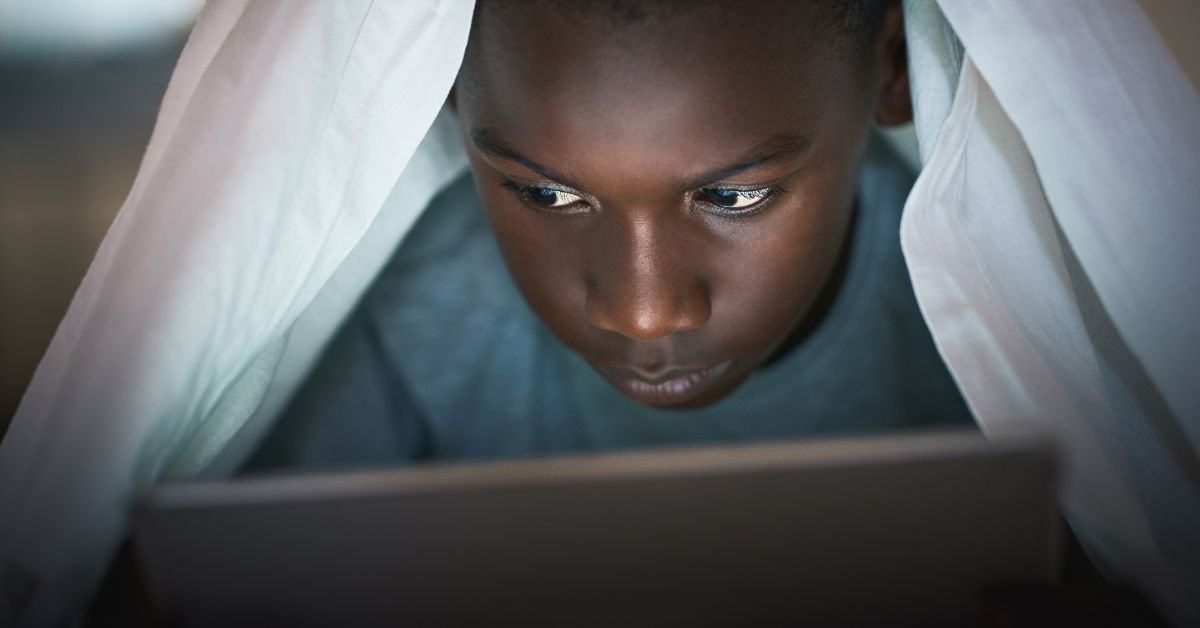The internet is an amazing tool for homeschoolers. It’s a library, a tutor, a museum, and a gateway to the world, all accessible from your living room. But let’s be honest, it’s also a giant, blinking, neon sign for distraction. One minute your child is diligently researching the Roman Empire, and the next they’ve fallen down a rabbit hole of cat videos and video game tutorials.
Ensuring internet safety for homeschoolers isn’t just about blocking malicious content; it’s also about helping them stay focused and productive. How do you keep their online learning on track without becoming the dreaded screen-time police? It’s a delicate balance, but you can absolutely achieve it.
The Digital Tightrope: Balancing Freedom and Focus
Homeschooling gives us the incredible flexibility to tailor education to our children’s needs, and digital resources are a huge part of that. However, with this freedom comes the responsibility of teaching them how to navigate the online world responsibly. The goal isn’t to lock down their devices so tightly that they can’t explore, but to create a structured environment where learning is the priority. It’s about teaching them digital discipline—a skill that will serve them well beyond their school years. Think of it as teaching them to swim in the vast ocean of the internet; you don’t just toss them in. You start in the shallows, stay close by, and teach them how to handle the currents.
This process involves open communication about why these rules are in place. When kids understand that the boundaries are there to help them succeed and stay safe, rather than just to restrict them, they are far more likely to be on board. Explain that focus is like a muscle; the more you train it, the stronger it gets. These strategies are simply the workout plan for their focus muscle.
Practical Strategies for Monitoring Online Learning
Creating a focused learning environment is less about constant surveillance and more about smart, consistent strategies. Here are some actionable ways to monitor and guide your child’s online activities to ensure they are making the most of their educational time.
- Designate a Learning Zone: Just as you have a space for sleeping and a space for eating, create a designated area for schoolwork. This shouldn’t be their bedroom where distractions are plentiful. Set up their computer in a common area like the living room or kitchen. This “public screen” approach makes it easier for you to see what they are working on at a glance and naturally discourages off-task behavior.
- Establish a Schedule: Structure is your best friend. Work with your child to create a daily or weekly schedule that clearly outlines time for online lessons, research, and offline activities. Importantly, schedule in “free screen time” as well. When kids know they have a dedicated time for games or videos later, they are less tempted to sneak it in during school hours.
- Use a “Parking Lot” for Distractions: When a distracting thought or a desire to look something up pops into their head, have them write it down on a notepad (a “parking lot”) to check out later during their free time. This acknowledges the thought without derailing their current task.

Leveraging Technology to Your Advantage
Fighting technology with technology might sound counterintuitive, but using the right tools can make monitoring much simpler and more effective. Many of these tools are designed to empower parents without being overly intrusive.
- Parental Control Software: Modern parental control apps are more than just content blockers. They can help you manage your child’s screen time by setting daily limits, creating schedules, and pausing the internet on demand (hello, dinner time!). Popular options allow you to see which apps and websites your child is using most, giving you valuable insight into their digital habits.
- Browser Extensions for Focus: There are fantastic browser extensions designed to minimize distractions. Tools like BlockSite or StayFocusd allow you to temporarily block access to specific websites—like YouTube, social media, or gaming sites—during designated school hours. You can customize the block list and the schedule, putting control in your hands.
- Kid-Safe Browsers: For younger children, using a kid-safe browser can be a great starting point. These browsers are designed with built-in filters that automatically block inappropriate content and may limit access to a pre-approved list of websites. This creates a walled garden where they can explore safely.
- Router-Level Controls: For a whole-home solution, you can set up parental controls directly on your Wi-Fi router. This allows you to apply settings to every device connected to your network. You can create user profiles for each child, filter content categories, and set time limits for internet access across all their devices, from tablets to game consoles.
Internet Safety for Homeschoolers: It’s All About Communication
While tools and schedules are vital, they are no substitute for open and ongoing conversation. The most effective way to keep your kids safe and on track online is to build a foundation of trust and communication. Talk to them about the types of distractions they face and why it’s important to manage them. Share your own struggles with digital distractions to show them it’s a universal challenge. This approach transforms you from an enforcer into a trusted guide.
Regular check-ins are more effective than secret spot-checks. Instead of looking over their shoulder, sit down with them at the end of the day or week and review their progress. Ask them what they learned, what they found challenging, and if they felt distracted. This dialogue helps you understand their perspective and collaboratively find solutions. When kids feel like they are part of the process, they take more ownership of their learning.
Remember to also discuss the “why” behind internet safety rules. Explain the risks of sharing personal information, the concept of a digital footprint, and how to identify unreliable sources. These conversations are crucial life lessons that equip them to be responsible digital citizens. By fostering an environment of open dialogue, you teach them to come to you when they encounter something confusing or uncomfortable online, which is the ultimate safety net.
Creating a Balance That Works for Your Family
Every family is different, and what works for one may not work for another. The key is to find a balance that aligns with your family’s values and your child’s age and maturity level. For a younger child, more direct supervision and stricter controls might be necessary. For a teenager, the focus might shift more toward teaching time management and digital responsibility, giving them more autonomy as they prove they can handle it.
Don’t be afraid to experiment and adjust your approach. You might find that a strict schedule is perfect for one child, while another thrives with a more flexible to-do list. The goal is progress, not perfection. There will be days when focus is a struggle, and that’s okay. Use those moments as learning opportunities to discuss what went wrong and how to do better next time. The digital world is constantly changing, and your approach to managing it will need to evolve as well. Stay informed, stay engaged, and most importantly, stay connected with your child.
Explore More Homeschooling Resources
Navigating the world of online learning is just one piece of the homeschooling puzzle. From choosing a curriculum to fostering social skills, there’s always more to learn and explore on this rewarding journey. We invite you to continue browsing our blog for more practical advice, encouragement, and resources designed to help you and your child thrive in your homeschooling adventure.



